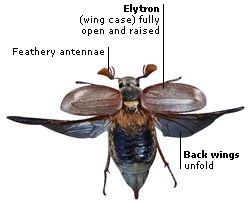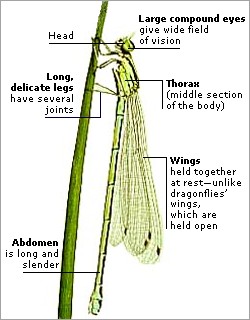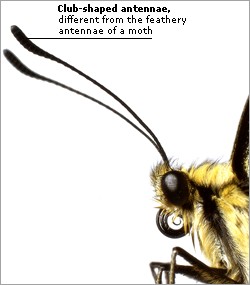DK Nature: Insects
The most numerous animals on Earth, insects form about 75 percent of the animal kingdom. Around 800,000 species have been identified, but there may be up to 10 million. Insects are six-legged invertebrates with powerful sense organs, including ANTENNAE. Some live in COLONIES.

In beetles such as this cockchafer, the front wings have evolved into tough, rounded cases called elytra. These protect the delicate back wings from damage when the beetle is on the ground. The elytra are lifted out of the way as the beetle takes off and flies.
The main reason for insects’ success is their variety. There are so many species that there is almost nowhere on land they cannot live, and almost nothing they cannot eat. Their small size enables them to go almost anywhere in search of food. Many insects can fly, which makes it easy for them to colonize new places.
Many insects are camouflaged (naturally disguised), so that predators do not see them. Some species are armed with stingers or foul-tasting poison. Many of these have bright colors, such as black-and-yellow stripes, to warn enemies away.
Insects eat a huge range of foods. Around half are plant-eaters, feeding on leaves, roots, seeds, nectar, or wood. Praying mantises are predators, hunting other small creatures. Fleas and lice are parasites, eating the flesh or blood of larger animals without killing them.
Many adult insects die off in winter. Their eggs or young survive in sheltered places and emerge in spring. Some insects survive the cold by hibernating. Others, such as monarch butterflies, migrate long distances to avoid the winter chill.
Plant-eating insects can harm crops and fruit trees. Wood-munching termites destroy homes and furniture, while biting insects can spread disease. However, many insects are helpful to humans—for example, honeybees make honey, ladybugs eat aphids (which damage garden plants), and silkworms produce silk.
| Insects have thrived on Earth for over 400 million years. The insect world is divided into 29 groups, called orders. |
| The largest order, the beetles (Coleoptera), contains more than 370,000 species. |
| Other major orders are moths and butterflies (Lepidoptera, 150,000 species), bees, wasps, and ants (Hymenoptera, 120,000 species), flies (Diptera, 100,000 species), and bugs (Hemiptera, 80,000 species). |
The main sense organs of most insects are the antennae (feelers) on their heads. These often long and slender projections are covered with tiny sensitive hairs. As well as feeling, the antennae are also used for smelling, and sometimes for taste and hearing, too.
Insects use antennae to find food and detect enemies. Lice, fleas, and other insects that feed on other animals use their antennae to sense the body heat or moisture of their victims. Some male insects have especially sensitive antennae, which can pick up scents called pheromones given off by females (their mates).
Many insects have compound eyes, with dozens of lenses that work together to form a detailed picture. Some also have sensitive bristles on their abdomens, which detect air currents caused by moving predators or prey. Insects’ eardrums may be on their legs or body. Some insects, such as flies, have taste organs on their feet.
Most insects live solitary lives, but termites, ants, and some wasps and bees live together in large colonies. Members cooperate in building the nest and finding food.
Most insects take little or no care of their young, but social insects are an exception. Workers carefully guard the young and bring them food. Worker wasps bring chewed-up insects for their grubs (larvae). Honeybee grubs are fed on honey. These young insects grow up in a nursery at the heart of the nest.


